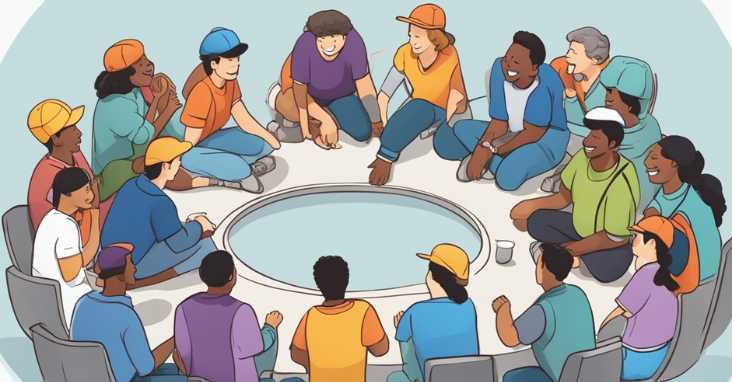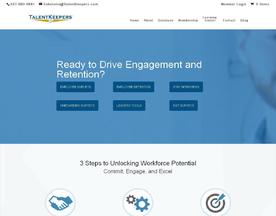What are ice breakers for work? Ice breakers for work are fun, engaging activities designed to warm up conversations and strengthen team cohesion among colleagues.
Ice breakers for work are a popular way to kick off a meeting, training session, or team-building event. They are designed to help break down barriers and encourage communication between colleagues who may not know each other well or who may be hesitant to speak up in a group setting. Ice breakers for work can be a great way to build rapport and establish a positive, collaborative atmosphere in the workplace.

Understanding Ice Breakers for Work
To be effective, ice breakers for work should be carefully chosen and executed. It’s important to consider the goals of the activity and the dynamics of the group. Some ice breakers for work may be more appropriate for certain types of teams or meetings than others. Additionally, it’s important to consider the timing and duration of the activity, as well as any cultural or personal factors that may impact participation.
Effective Ice Breaker Strategies
There are many strategies that can be used to make ice breakers for work more effective. For example, it’s important to create a safe and non-judgmental environment where participants feel comfortable sharing their thoughts and ideas. Additionally, ice breakers for work should be engaging and interactive, and should encourage participants to work together and communicate effectively. Finally, it’s important to follow up after the activity to reinforce the connections that were made and to build on the momentum created by the ice breaker.
Key Takeaways
- Ice breakers for work can be a great way to build rapport and establish a positive, collaborative atmosphere in the workplace.
- To be effective, ice breakers for work should be carefully chosen and executed, taking into account the goals of the activity and the dynamics of the group.
- Effective ice breaker strategies include creating a safe and non-judgmental environment, encouraging engagement and interaction, and following up after the activity to reinforce connections.
Understanding Ice Breakers For Work

Ice breakers for work are activities or games that are used to help people get to know each other better and create a more comfortable environment for communication. They are often used in work settings to promote team-building, collaboration, and company culture, and to create a sense of psychological safety.
The Purpose of Ice Breakers
The purpose of ice breakers for work is to break down barriers and create a more open and relaxed environment. They can help people feel more comfortable around each other, which can lead to better communication and collaboration. Ice breakers for work can also help to create a sense of team bonding, which can be important in work environments where teamwork is essential.
Types of Ice Breakers
There are many different types of ice breakers for work, and they can be adapted to suit different work environments and situations. Some common types of ice breakers for work include:
- Name games: These games involve introducing yourself and learning the names of others in the group. They can be simple, such as going around the room and saying your name, or more complex, such as playing a game where you have to remember everyone’s name in order.
- Group activities: These activities involve working together as a group to complete a task. They can be problem-solving activities, such as building a tower out of spaghetti and marshmallows, or creative activities, such as making a group mural.
- Question games: These games involve asking and answering questions to get to know each other better. They can be simple, such as asking everyone to share their favorite food or hobby, or more complex, such as playing a game where you have to guess who wrote a particular answer to a question.
Ice breakers for work can be a valuable tool in creating a positive work environment and promoting effective communication and collaboration. To learn more about the benefits of ice breakers for work, check out this article from Forbes.
Effective Ice Breaker Strategies
Ice breakers for work are a great way to create a relaxed and comfortable atmosphere in the workplace, especially when starting a new project or meeting. Effective ice breakers for work can help team members get to know each other better, build trust, and improve communication. Here are some effective ice breaker strategies that can be used for small groups, large groups, and virtual teams.
For Small Groups
For small groups, ice breakers for work that involve personal sharing can be effective. One great ice breaker is to have each team member share a fun fact about themselves. This can be a great way to get to know each other on a personal level and can help break down any barriers that may exist.
Another effective ice breaker is to have team members share their favorite hobby or interest. This can help team members find common ground and can lead to more meaningful conversations.
For Large Groups
For larger groups, it can be more difficult to get everyone involved in a single ice breaker. One effective strategy is to break the group into smaller teams and have each team come up with a team name and a team cheer. This can help create a sense of unity and can be a fun way to get everyone involved.
Another effective ice breaker for larger groups is to have each team member share their favorite quote or saying. This can be a great way to inspire and motivate team members.
For Virtual Teams
For virtual teams, it can be more difficult to create a sense of connection and community. One effective ice breaker is to have each team member share a photo of their workspace or their pet. This can help team members get to know each other on a more personal level and can help create a sense of community.
Another effective ice breaker for virtual teams is to have each team member share their favorite virtual background. This can be a fun way to get everyone involved and can help create a more relaxed atmosphere.
Overall, effective ice breakers for work can help create a positive and productive work environment. By using these strategies, facilitators, team leaders, and anyone leading a meeting can improve communication skills and build stronger teams. For more information on ice breaker strategies, check out this link from MindTools.
Ice Breaker Activities and Games
Ice breakers for work are a great way to get everyone in the office feeling comfortable and engaged. Here are some fun and effective ice breaker activities and games that can help to break down barriers and encourage teamwork.
Quick Icebreaker Games
Quick icebreaker games are perfect for getting people up and moving while also helping to break the ice. One popular game is the beach ball toss. Simply write different icebreaker questions on a beach ball and have everyone toss it around. When someone catches the ball, they have to answer the question that their right thumb lands on.
Another quick icebreaker game is Guess Who. Have everyone write down a few interesting facts about themselves on a piece of paper. Collect the papers and read the facts out loud one by one. Everyone has to guess who wrote each fact.
Creative Icebreaker Activities
Creative icebreaker activities are perfect for getting the creative juices flowing. One popular activity is the Draw and Guess game. Divide everyone into pairs and have one person draw a picture while the other person tries to guess what it is. This activity is great for encouraging communication and creativity.
Another creative icebreaker activity is the Marshmallow Challenge. Divide everyone into teams and give each team a bag of marshmallows and some toothpicks. The teams have to build the tallest tower they can using only the marshmallows and toothpicks.
Problem-Solving Icebreakers
Problem-solving icebreakers are perfect for encouraging teamwork and critical thinking. One popular activity is the Brainstorming game. Divide everyone into teams and give each team a problem to solve. The teams have to come up with as many solutions as they can in a set amount of time.
Another problem-solving icebreaker is the Marshmallow Challenge. This activity encourages teams to work together to solve a problem and come up with a creative solution.
For more icebreaker activities and games, check out this resource with a variety of options to choose from.
Ice Breaker Questions
Ice breaker questions are a great way to start conversations and build relationships in the workplace. They can help team members get to know each other better, deepen connections, and create a more positive and engaging work environment. Here are some examples of ice breaker questions that can be used in different situations.
Getting to Know Each Other
When team members are new to each other, it can be helpful to start with some basic questions to get to know each other’s interests and backgrounds. Here are some examples of ice breaker questions that can be used to get to know each other:
- What’s your favorite hobby or pastime?
- Where did you grow up?
- What’s your favorite type of music?
- What’s your favorite book or movie?
- If you could travel anywhere in the world, where would you go?
Deepening Team Connections
Once team members have gotten to know each other, it can be helpful to use ice breaker questions to deepen connections and build trust. Here are some examples of ice breaker questions that can be used to deepen team connections:
- What’s your biggest accomplishment at work?
- What’s your biggest challenge at work?
- What’s your favorite thing about working on this team?
- What’s something you’ve learned from a colleague that has helped you in your work?
- What’s something you admire about a colleague on this team?
Fun and Engaging Questions
Finally, it’s important to include some fun and engaging ice breaker questions to keep the mood light and positive. Here are some examples of ice breaker questions that can be used to add some fun to the workplace:
- Would you rather live in a treehouse or a castle?
- What’s the craziest thing on your bucket list?
- What are two truths and a lie about yourself?
- What’s your favorite thing to do on the weekends?
- If you could have any superpower, what would it be?
For more ideas on ice breaker questions, check out this list of 100 ice breaker questions from Museum Hack.
Building Team Dynamics

A strong team dynamic is essential for any workplace to function effectively. Building team dynamics involves fostering team cohesion, encouraging open communication, and cultivating trust and morale.
Fostering Team Cohesion
Team cohesion refers to the degree to which team members work together and share a common goal. To promote team cohesion, it is important to create opportunities for team members to work together and get to know each other. This can include team-building activities, regular team meetings, and social events outside of work.
One effective way to foster team cohesion is through shared experiences. This could include participating in a charity event, attending a conference together, or taking part in team-building activities. By working together towards a common goal, team members can build trust and camaraderie.
Encouraging Open Communication
Open communication is essential for a team to function effectively. Team members should feel comfortable expressing their ideas and concerns, and should be encouraged to do so. This can be achieved by creating a safe and supportive environment where everyone’s opinions are valued.
Regular team meetings can be a great way to encourage open communication. During these meetings, team members can discuss their progress, share ideas, and raise any concerns they may have. It is important to ensure that all team members have an opportunity to speak and that their opinions are heard.
Cultivating Trust and Morale
Trust and morale are essential components of a strong team dynamic. When team members trust each other, they are more likely to work together effectively and support each other. High morale can also lead to increased productivity and improved performance.
To cultivate trust and morale, it is important to create a supportive environment where team members feel valued and respected. This can include recognizing and rewarding team members for their contributions, providing opportunities for professional development, and fostering a culture of collaboration and teamwork.
One external resource that can be helpful in building team dynamics is the Harvard Business Review. They offer a variety of articles and resources on team building and management, including tips for fostering collaboration and improving team performance.
Special Considerations

When it comes to choosing ice breakers for work, there are some special considerations to keep in mind. Here are some key points to consider:
Ice Breakers for Introverts and Extroverts
It’s important to remember that not everyone is comfortable with the same level of social interaction. Introverts may feel overwhelmed by too much group activity, while extroverts may crave more interaction. To accommodate both personality types, consider offering a mix of ice breakers for work that allow for deeper level conversations as well as those that focus on shared interests.
One resource that may be helpful in selecting ice breakers for work for different personality types is this article from Psychology Today. It offers a variety of ice breakers that cater to both introverts and extroverts.
Cultural and Personal Sensitivity
In a diverse workplace, it’s important to be mindful of cultural and personal differences when selecting ice breakers for work. Some activities may be inappropriate or uncomfortable for certain individuals or groups. It’s important to choose ice breakers that are work-appropriate and inclusive.
To ensure that your ice breakers for work are culturally sensitive, consider consulting with a diversity and inclusion specialist or using a resource like this guide from the Society for Human Resource Management.
Adapting to Remote Work
With more and more teams working remotely, it’s important to adapt ice breakers for work to a virtual environment. Ice breakers that rely on physical proximity or group activities may not be possible in a remote setting. Instead, consider using virtual ice breakers that allow team members to connect online.
One resource for virtual ice breakers is this list from the Muse. It offers a variety of ice breakers that can be done online, such as virtual scavenger hunts and online trivia games.
By keeping these special considerations in mind, you can select ice breakers that are appropriate and effective for your team.
Ice Breaker Follow-Up

After conducting an ice breaker activity, it’s important to follow up with participants to ensure that the connections made during the activity are maintained and strengthened. Follow-up can also help to reinforce the team collaboration and conversation starters that were initiated during the ice breaker.
One effective way to follow up after an ice breaker is to schedule a team meeting shortly after the activity. During the meeting, team members can reflect on the ice breaker and discuss any milestones or team timeline events that may have been brought up during the activity. This can help to keep the conversation started during the ice breaker going and can lead to further collaboration and connection building.
Another way to follow up is to send out a survey to participants to gather feedback on the ice breaker activity. This can help to identify what worked well and what could be improved for future ice breaker activities. Additionally, this can provide an opportunity for participants to share their own conversation starters and connect with others who may share similar interests or goals.
It’s also important to follow up with individual team members after the ice breaker. This can be done through one-on-one conversations or through team-building exercises that encourage further collaboration and connection building. By following up in this way, team members can continue to build on the connections made during the ice breaker and work towards achieving their team goals.
For more information on effective ice breaker follow-up techniques, check out this article from Business News Daily.
Frequently Asked Questions

What are some effective 5-minute ice breaker activities for team meetings?
There are many effective 5-minute ice breaker activities that can be used in team meetings, such as “Two Truths and a Lie,” “Would You Rather,” and “This or That.” These activities are quick and easy to set up and can help team members get to know each other better.
Can you suggest humorous ice breaker ideas suitable for a work environment?
Humorous ice breaker ideas can be a great way to lighten the mood in a work environment. One idea is to have team members share funny work-related stories or jokes. Another idea is to have a “caption this” contest where team members come up with funny captions for a silly picture.
What are the best ice breaker games for small group interactions at work?
There are many ice breaker games that work well for small group interactions at work, such as “Human Knot,” “Two Truths and a Lie,” and “Never Have I Ever.” These games encourage teamwork and communication while also being fun and engaging.
Could you provide examples of engaging ice breaker questions for virtual work meetings?
Engaging ice breaker questions for virtual work meetings can include questions like “What’s the best book you’ve read recently?” or “What’s your favorite way to relax after work?” These types of questions can help team members get to know each other better even when they are working remotely.
What are some funny yet appropriate ice breaker questions to lighten the mood in the office?
Funny yet appropriate ice breaker questions can include questions like “If you could have any superpower, what would it be?” or “What’s the weirdest food you’ve ever eaten?” These types of questions can help team members bond over shared experiences and interests.
How can I incorporate ice breakers into professional settings without compromising work decorum?
Ice breakers can be incorporated into professional settings without compromising work decorum by choosing appropriate activities and questions. It’s important to consider the tone and culture of the workplace when selecting ice breakers and to ensure that they are inclusive and respectful of all team members.
For more ideas on ice breakers for work, check out this article by Business News Daily.















